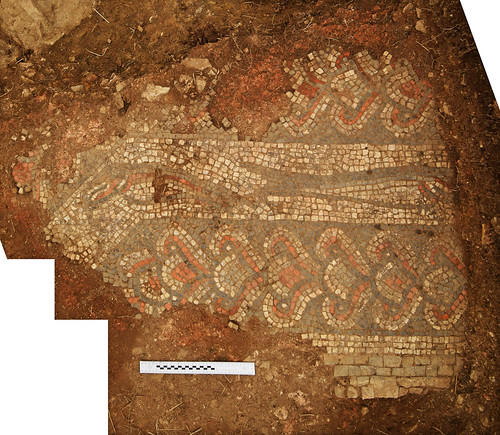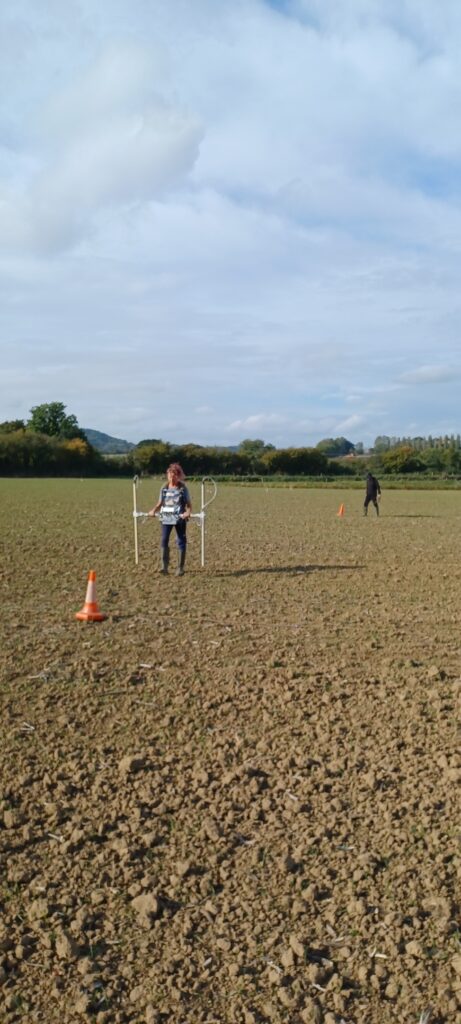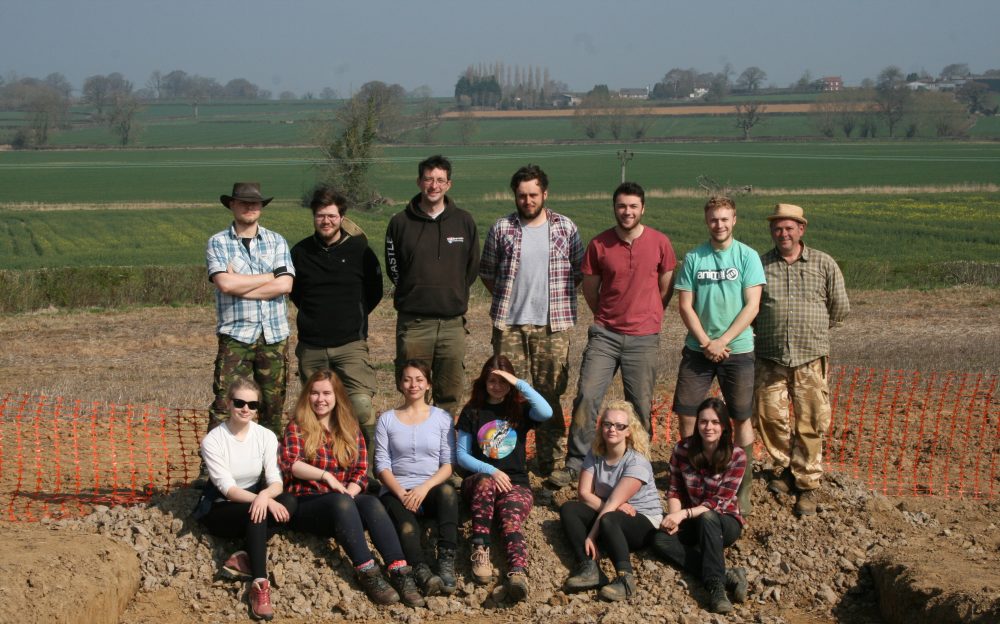Today has been our penultimate day on site. Only two more sleeps until our return to Newcastle!

Not much digging happened today. It’s the end of the excavation, so most of the time was spent undertaking the last bits of vital recording. This included Charlie and Chris drawing a section (in mirror world and then the right way around) and Annetta and Antonia also drawing a section. James P and Meg undertook to draw a plan of the extension, James G and Josh were also drawing plans. Andy spent much of the day photographing the mosaic.

Andy’s picture of the mosaic. At the far left you can just make out the arcs of tessera that mark the nose of another fish…
It was also a day that saw quite a few visitors. In the morning, Michaela, an old school friend of James’s, came to see the mosaic with her daughter and niece. In the afternoon we were visited by half a dozen of our friends from SSARG, including Nigel and Liz who carried out the geophysics with James G back in 2009. Finally, we were visited by Pat Witts, author of A Mosaic Menagerie: creatures of land, sea and sky in Romano-British mosaics. She was thrilled to see our fish and even more excited to see that we had excavated part of ‘Panel C’. This part of the mosaic was poorly recorded in the previous excavations and it is apparent that not only does one of our fish have a turned head but just the tip of another survives. This expands the number of fish on the Lufton mosaic from 29 to 30! Not bad for two weeks in Somerset.

Pat Witts photographing the fish
Finally, it’s worth recording that back at base Josh found a four-leaf clover. May his (and our) luck continue!









